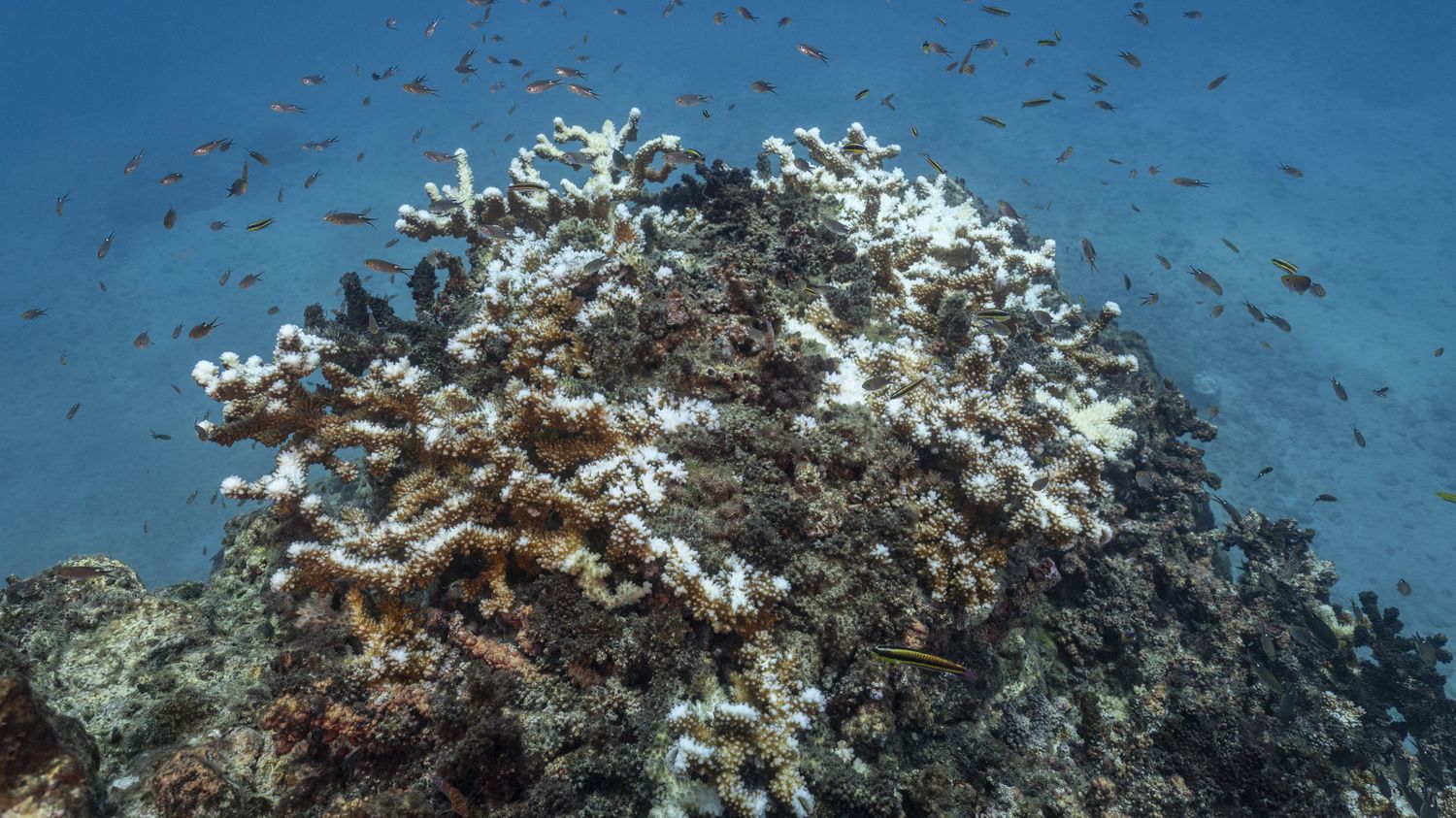Coral reefs, which are home to a quarter of marine biodiversity, are increasingly threatened by ocean warming. This is causing the coral to bleach faster than expected, and the two largest sites, in Australia and Mexico, are in an alarming state.

Published
Reading time: 6 min

The oceans are warming all over the planet and this could have dramatic consequences. The US National Oceanic and Atmospheric Administration (NOAA) expressed concern this week about this powerful marine heat wave that is currently occurring. Since February 2023, temperature readings have set records in all four corners of the world. Even if according to the agency, it is still too early to precisely measure the impacts of the increase in temperature, the effects are already visible, particularly on corals which are massively bleaching. In this area, Australia’s Great Barrier Reef is unfortunately in the forefront.
In Australia, the days of the Great Barrier Reef seem numbered
The authority in charge of protecting the largest coral reef in the world announced on Wednesday April 17, 2024, that the current massive bleaching episode is the most severe ever recorded. This is the rather depressing news that the Australian authorities have just delivered. According to aerial surveys carried out in recent weeks, three quarters of the reefs observed are affected. This bleaching is even considered extreme on around 40% of the Great Barrier Reef, which nevertheless extends over 2,300 km. This year, two cyclones also damaged it, but the main cause of its bleaching is of course global warming and that of the oceans. From now on, its days seem numbered, since this episode is not only the most violent, but also the fifth in barely eight years.
But if Australia, as a major producer of fossil fuels, is partly responsible for this warming, it cannot solve this global challenge alone. If the world fails to contain global warming below 2°C, almost all of the world’s coral reefs could disappear.
Fears of economic losses and contradictory measures
This would of course be a huge loss in terms of biodiversity but also a major blow to the Australian economy. The Great Barrier Reef provides more than 64,000 jobs and nearly 3.5 billion euros in tourism revenue each year. This is the reason why the Australian government is so afraid of the next meeting of the UNESCO World Heritage Committee, in July 2024: given the damage observed, we do not see how the Great Barrier Reef will be able to escape the list of sites in danger.
Australia has managed to postpone this deadline twice already, and the government elected two years ago is showing itself to be much more proactive in the fight against global warming. Unfortunately, its actions are still considered too timid given the imminence of the threat: while committing to protecting species threatened with extinction and reducing its CO2 emissions, it also continues to issue new permits for exploitation of natural gas deposits, like so many nails on the coffin of the Great Barrier Reef.
In Mexico, the disaster scenario of widespread bleaching is coming sooner than expected
Mexico is bordered in the Caribbean by the Mesoamerica coral system, the second largest in the world, and surrounded on both sides by other reefs in the Atlantic and Pacific. The country is not only particularly affected by the phenomenon of ocean warming, but it is surprised by the speed of the phenomenon.
This is the first time that scientists have observed coral bleaching of such proportions. It is a widespread bleaching, from North to South, from East to West. Experts estimate that at least 80% of corals are affected and all agree that the probability of seeing them die within a year is high. This is a disaster scenario that is coming sooner than expected. It was not expected before 2030 at the most dramatic. It must be said that the water has never been so warm around Mexico: on each coastline, surface waters reached an average of 31° during the summer of 2023.
Although this is a record year, the phenomenon is not new in Mexico; the country is already experiencing the consequences of warming waters. Rising sea levels are forcing villages to move. It is also clearly visible every year on the beaches of the Caribbean, when several tonnes of sargassum wash up. This brown, floating algae is born in the ocean and multiplies at high speed in warm currents.
The El Nino phenomenon, added to warming, increases the risk of high category hurricanes
Mexico must also face the El Niño phenomenon, a natural and recurring event, which is taking place this year in the region, and which also tends to warm the waters. A circulation of ocean currents in the equatorial Pacific brings warm waters to the surface. The impact is already happening, it’s very clear in the curves, and it’s accumulating with human-caused warming. The risk is significant because the heat of the oceans fuels the formation of hurricanes and Mexico is in their path.
In October 2023, the city of Acapulco was devastated by Otis, a category 5 hurricane, which formed over the Pacific and strengthened precisely by passing over areas where the temperature was higher than in the rest of the ocean. In Mexico, hurricane season begins in May. With El Niño still in place and global warming of the planet’s waters, the chances of strong category storms appearing are much higher.
